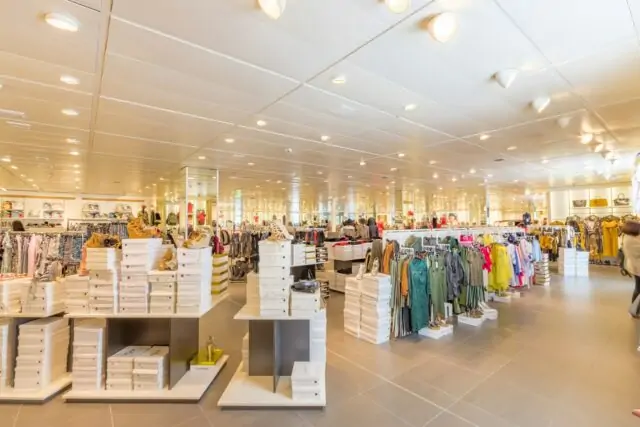
The retail industry is always changing, influenced by new design and technology trends that impact customer experiences and sales. Track lighting, a fundamental yet dynamic part of retail store design, plays a key role in improving product visibility and creating a welcoming atmosphere. Good lighting not only highlights merchandise but also strategically emphasizes it, affecting consumer behavior and store aesthetics. With flexible track lighting systems, retail managers can efficiently adjust to different merchandising strategies and store layouts.
Now, let’s look at the method behind these retail lighting strategies, focusing on creating practical track lighting layouts customized for retail environments. This discussion outlines a process that starts with understanding the store’s layout and goes on to select appropriate lighting fixtures. The steps provided will help store managers design, implement, and optimize a track lighting plan that meets daily needs and enhances the shopping experience.
Assess Your Store’s Layout
To kick off the process of upgrading your retail store with track lighting, start by carefully examining your space. As you assess how your store is laid out, pay close attention to specific areas like display shelves, checkout counters, and fitting rooms that require customized lighting solutions. Consider details such as ceiling height and the overall size of the floor space.
This initial assessment not only helps identify key areas for lighting but also provides a solid basis for creating a lighting plan that meets both the functional and aesthetic requirements of the store. By thoroughly analyzing your space, you lay the groundwork for developing a track lighting setup that seamlessly integrates with your store’s layout.
Determine Your Lighting Needs
The next step involves determining the type of lighting needed in different areas of your store. Factors such as color temperature, which influences mood and visual comfort; brightness, which is necessary for optimal visibility; and beam angle, which directs focus, all play vital roles in this decision-making process.
Whether you aim to highlight your top products with task lighting or create a warm, inviting atmosphere with ambient lighting, each choice should reflect your brand’s aesthetic and functional needs. This thorough approach ensures that the lighting isn’t just installed but strategically integrated to enhance the shopping experience, making products more attractive and store layouts more intuitive.
Choose the Right Track Lighting System
When choosing a track lighting system for your retail store, it’s important to consider both the store’s layout and its lighting needs. You have various options to choose from, including track heads, pendants, and spotlights, each serving different purposes in enhancing the store’s atmosphere and functionality.
Track heads offer focused light direction, making them great for showcasing products, while pendants can add a touch of sophistication and are commonly used for overall ambient lighting. Spotlights, known for their intense and focused beams, are perfect for highlighting specific merchandise areas. It’s important to also consider the flexibility and adjustability of these fixtures, especially for future changes in your store’s layout or displays. By carefully weighing these factors, retailers can select a track lighting system that meets both current aesthetic and functional needs and can adapt to future requirements.
Create a Lighting Layout Plan
Planning the layout for track lighting requires a methodical approach, starting with using grid paper or software to sketch a detailed plan. Each track light’s position is carefully marked, taking into account which areas need more light. It’s important to consider the spacing between each fixture to avoid overlap or dim spots.
Orientation is also key — adjusting the direction each fixture faces maximizes lighting coverage, ensuring that all product displays and walking areas are well-lit. This strategic placement not only improves the lighting’s functionality but also enhances the store’s aesthetic appeal, making every corner inviting and visually dynamic.
Installation and Adjustment
Moving from planning to action, the installation and adjustment phase of your track lighting project is a must. With your layout plan ready, begin installation by closely following the manufacturer’s guidelines to ensure everything works as intended. This careful approach minimizes potential issues, making the installation process smoother. Once installed, the real skill lies in adjusting each light fixture’s position, angle, and brightness.
These adjustments are vital for achieving your desired illumination and ambiance. Continuously tweaking allows you to refine the setup to match your retail environment’s aesthetics and functionality perfectly, striking an ideal balance that showcases merchandise while providing a welcoming atmosphere for shoppers.
Creating an efficient track lighting layout plan for your retail store, while initially daunting, is achievable with careful planning. From evaluating your store’s layout to selecting and installing the appropriate track lighting system, each stage contributes to enhancing your store’s ambiance and showcasing merchandise effectively. The article has provided a clear roadmap: analyzing spatial dynamics, pinpointing specific lighting requirements, selecting adaptable fixtures, and creating a detailed layout—each necessary in promoting both functionality and visual appeal in your store.










